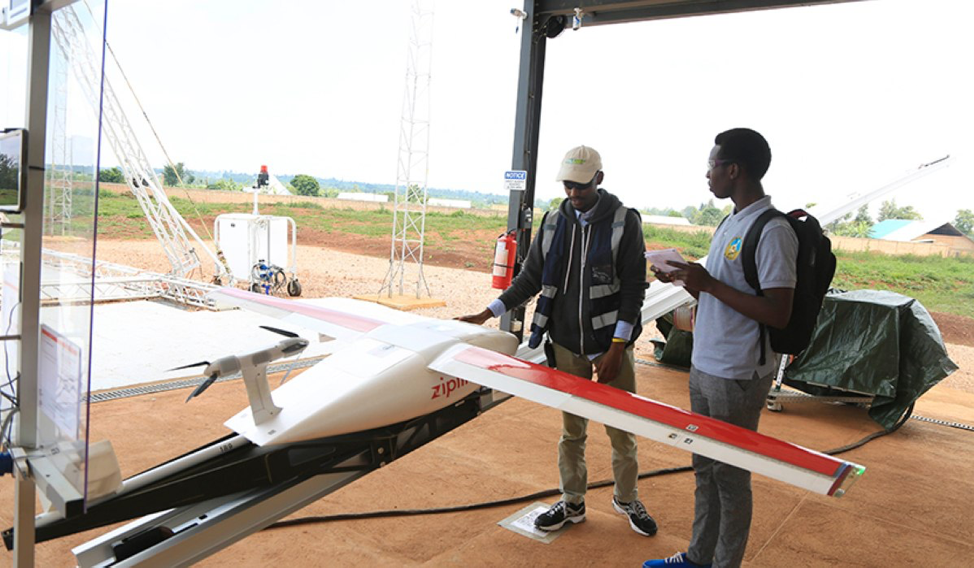TRL Group to Launch Drone Production in Rwanda by 2026
Rwanda is stepping into the spotlight of Africa’s drone industry. Czech company TRL Group has confirmed it will begin drone production in Rwanda in 2026, a move that could transform the country into a regional hub for unmanned systems.
TRL Group started its operations in Rwanda in 2023. In just two years, the company has built a local team of engineers and laid the groundwork for a manufacturing line. By 2030, TRL wants to export drones from Rwanda to other African countries.
“We started operations in Rwanda with the aim of making it an African hub for the satellite and drone industry,” TRL Group CEO Petr Kapoun told The New Times. “In 2026 we plan to begin production here so that by 2030 we can supply finished products manufactured in Rwanda.”
The company currently employs 10 Rwandan engineers. Kapoun said TRL will expand the team to 50 in the near future. The company also plans to hire remote drone operators to support the rollout.
Rwanda’s institutions are backing the project. The Rwanda Space Agency and the Rwanda Civil Aviation Authority are providing support to ensure the industry can grow in a regulated and safe environment.
At the moment, TRL manufactures up to 200 drones per month in the Czech Republic. Kapoun believes Rwanda has the potential to match or even surpass those numbers, but he stressed that demand across Africa will shape the production scale. “I believe that this number could be even higher. But of course, it will take some time and will depend on clients,” he said.
Rwanda’s broader drone ecosystem
TRL’s arrival builds on Rwanda’s growing reputation as a global testbed for drones. The country already works with U.S. drone company Zipline, which has been delivering blood and medical supplies to remote hospitals since 2016.
Zipline now plans to expand its services in Rwanda in 2026. The company will introduce contactless drone delivery in Kigali, giving residents a new model for urban logistics.
China’s EHang has also partnered with Rwanda to showcase Africa’s first unmanned air taxi. The system was unveiled earlier this year and Kigali is set to become the first city on the continent where drones will operate as independent passenger transport.
In June, Russian drone maker Aerodin announced plans to supply drones to Africa, highlighting the growing competition in the market. Rwanda’s position at the center of these projects confirms its strategy to lead Africa’s drone revolution.
Ties beyond Africa
TRL Group brings more than civilian drone expertise. The company has been working with Ukraine since 2022, when the Czech Republic and Ukraine signed a space cooperation agreement. TRL developed several defense satellites under that deal, with the first satellite launched in January 2025. The satellite now forms part of Ukraine’s Constellation reconnaissance group.
This experience in defense and space tech strengthens TRL’s profile in Rwanda. It also signals the broader strategic value of Rwanda as a trusted partner for international aerospace firms.
A Big Shift For Rwanda
Rwanda is not only buying drone services anymore. It is now preparing to produce and export them. That shift creates new opportunities for African countries that need drones for agriculture, logistics, security, and environmental monitoring.
Local capacity building is another major win. Every engineer trained at TRL’s facility adds to Rwanda’s pool of high-tech talent. As production grows, so will jobs, skills, and innovation.
Rwanda’s government has been deliberate about this path. By supporting TRL alongside global players like Zipline and EHang, the country is sending a clear message: Rwanda wants to lead Africa in drones, aerospace, and advanced mobility.
The coming years will test the strength of that ambition. But for now, TRL’s commitment to produce drones in Kigali marks a turning point. Rwanda is no longer just a hub for drone services. It is on track to become a manufacturer and exporter, placing African-made drones in the skies across the continent by 2030.


